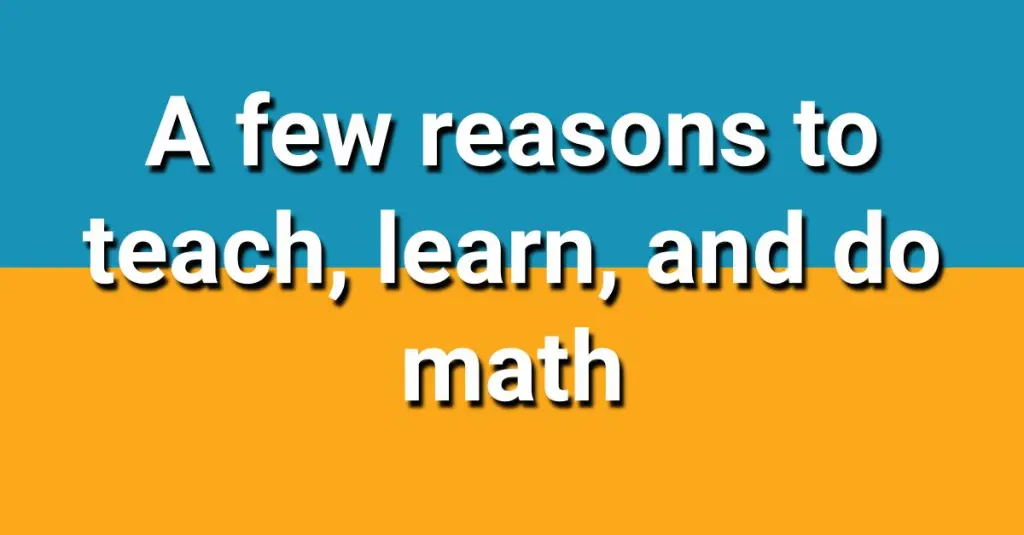As you may have heard, adults don’t need or use math. One can be a successful human without being a successful math learner. In fact, most adolescents and young adults will stop taking mathematics as soon as their school no longer requires them to do so. So why do we force adolescents and young adults to take the math that they do? You’ve also probably heard the question “when are we going to use this?” Similar questions include, “is this important?” and “is this on the test?”
These questions bum me out, but they do deserve answers. I hope that most disciplines wrestle with these fundamental questions.
When I ask these questions to teachers and pre-service teachers, I often get answers that you can bin in the following three buckets:
- The skills and habits one learns in math are important for life outside of school or even other classes. Things like persistent problem solving, being able to abstract a complex situation, becoming critical data literate members of the public are all skills that benefits the individual and even the society.
- The content one learns in math are applicable to professional pursuits outside of school. There is a lot of stuff from math class that can be applied to authentic situations. Or even, slices of content in math class might aid future STEM classes.
- Math is fun and enjoyable! Many of us enjoy doing math because it can be delightful. We would like to impart the joy that math brings to our students.
Depending on who you’re talking to, one of these motivators of math might be more resonant that others. There are entire professional development organizations devoted to making every second of every class day devoted to applying real world problems. There are non-profits that provide assessments on non-cognitive skills. There are math teachers that wish they could just make math more like math play time all the time.
Personally, I’m compelled by all three reasons and think all three have a good claim to the “WHY” when it comes to teaching math. And there are certainly times that I tend toward one over another based on the content I’m teaching, my students, or, if I’m being honest, how I’m feeling that day.
It is probably worth interrogating where our instruction lies. For example, if you were to take every lesson that you give over the course of a school year and placed a dot in this Venn diagram, what would it look like? If we pinged our assessment items to each of these motivators, what would that look like? If we asked students to place a dot on this diagram at the end of every lesson, what might that look like?

I’ll probably tug on this thread a bit throughout the Spring Semester. I may even turn it into one of my patented EmergentMath mini-series, so be sure to subscribe to my website. Also, I’m not on social media as much so you might miss a post otherwise.
